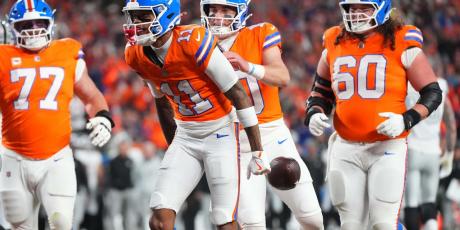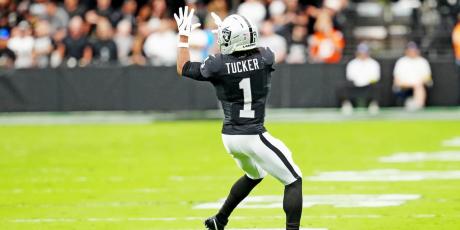Using Tiers to Win Your Fantasy League

What are positional tiers? How can they help me? These are questions you may have as you begin conducting research for your fantasy football league. You are in the right place because this article will tell you about positional tiers and how to dominate your draft by using them effectively.
Tiered Rankings: Standard | Half-PPR | PPR
What Are Positional Tiers?
Tiers are groups of players with a similar expected fantasy point performance for the season, usually separated by position. In practice, fantasy managers will be happy to draft any player from a specific tier since they are all of comparable value. Players not in that tier would represent a notable drop-off in fantasy points. Tiering stops you from concentrating on taking a certain player with each pick, shifting the focus to the values of ranges of players. This method can help owners avoid selecting inferior players at one position, simply because a player is next in the positional rankings and often point to superior groups of players at other positions.
How Positional Tiers Help You?
Tiering will easily identify the statistical drop-offs at each position and show the number of high-caliber players available at each tier. It also allows you to determine value in the draft by getting talented players from different positions before all the talent at that level is gone. Once a tier is exhausted and the next tier is available with many players, there is no need to quickly draft from the new tier since it has more of a supply. Instead, you can prioritize another tier at another position on the brink of being depleted.
Tiering allows you to get the most value from the options available. A player you are targeting is grabbed by someone else in your fantasy league right before you’re on the clock. Now you are on the clock and you look eerily similar to a deer in the headlights. You’re running out of time. Who will you choose?
As a gentle reminder, any player in that positional tier will do. You could always select your favorite. The bottom line is that every player in that tier is equal and selecting one of them is better than settling for a player in a lower tier. Now that you understand the benefits of using tiers let’s discuss some other housekeeping items.
What Else You Should Know About Positional Tiers?
Tiering is nonessential in the later rounds of fantasy drafts because of the larger number of players in each tier. You’ll be targeting potential breakouts, running back handcuffs, and bye week fill-ins.
You should also know that positional tiers are also an excellent resource to use in auction drafts. It allows you to avoid a bidding war with your other league-mates because it allows you to target other players in that positional tier for cheaper.
It could also be beneficial to highlight players within your tiers that have favorable schedules using our signature strength of schedule metric, schedule-adjusted fantasy points allowed (aFPA).
Bringing It All Together
You now understand positional tiers and how to effectively use them in your draft. And now, you’re thinking how can I tier players. The great news is our very own Kevin Zatloukal has created positional tiers for you.
Here is some insight into how the tiers were constructed and his methodology:
The goal in choosing tiers is to have the players within a single tier be easy replacements for one another. In particular, we would like the largest difference in projected fantasy points between any two players in the same tier to be small. The tiers you will see below were constructed by considering every possible way of putting players into tiers and choosing the one where the largest difference in points within a tier is minimized. Fantasy-relevant players within one tier, in almost all cases, have very similar point projections.






















